BUSINESS
Personal Loan Agreement: Secure Your Terms

When you consider taking out a personal loan, it’s crucial to secure your terms through a solid agreement. This contract not only clarifies the loan amount and repayment plan, but it also lays out the responsibilities for both you and the lender. Without this, misunderstandings can easily arise. So, what should you include in your loan agreement to ensure a smooth transaction? Let’s explore the essential components.
Understanding Personal Loan Agreements
Understanding personal loan agreements is essential for anyone considering borrowing money, especially since these documents lay out the crucial terms of your financial arrangement.
A personal loan agreement defines the loan amount, repayment plan, and interest rates, ensuring both parties know their responsibilities. You may want to use a personal loan agreement template to simplify the process, ensuring all necessary details are included.
If you’re borrowing from a friend, a personal loan agreement between friends can help maintain trust and clarity. By documenting the terms, you reduce the risk of misunderstandings and protect both yourself and your lender.
Types of Personal Loans
When considering personal loans, you’ll find several types tailored to different needs and financial situations.
Secured personal loans require collateral, usually offering lower interest rates, while unsecured personal loans don’t, leading to typically higher interest rates. If you prefer stability, fixed-rate personal loans maintain the same interest rate throughout the term. Conversely, variable-rate personal loans can fluctuate based on market conditions.
For quick cash needs, payday loans are short-term options with high-interest rates. Before committing, it’s essential to review the terms in your personal loan agreement PDF to ensure you understand the specifics.
Each type serves unique purposes, so choose based on your financial goals and circumstances.
Key Participants in Loan Agreements
A personal loan agreement involves key participants who play vital roles in the lending process. You’ll typically find two main players: the borrower and the lender.
As the borrower, you’re seeking funds, often for personal needs or investments. You’ll need to clearly communicate your financial situation and repayment ability. On the other hand, the lender—who could be a friend, family member, or financial institution—provides the loan and expects timely repayments. This relationship hinges on trust and transparency, making it essential to discuss terms openly.
Both parties must understand their responsibilities to avoid misunderstandings. By recognizing each participant’s role, you can foster a smoother lending experience and create a foundation for a successful financial agreement.
Advantages of Well-Structured Loan Contracts
Well-structured loan contracts offer numerous advantages that can significantly enhance the lending experience for both parties.
First, they provide clarity, ensuring you fully understand your obligations and rights. By clearly outlining terms, you reduce the risk of misunderstandings and disputes down the line. These contracts also establish a framework for accountability, which can foster trust between you and the lender.
Furthermore, having well-defined terms helps protect both parties in case of default, offering a clear course of action.
You’ll also find that transparent agreements encourage better financial decision-making, as you can assess your repayment capabilities accurately.
Critical Considerations Before Committing
Have you fully considered the implications of entering a personal loan agreement? Before committing, you should evaluate your current financial situation, including your credit score and existing debts.
A low credit score may lead to higher interest rates, making repayment challenging. Think about whether you can comfortably manage additional monthly payments without straining your budget. It’s also essential to understand the total cost of the loan, including interest and any fees. Consider if there are alternative financing options, such as saving up for your purchase instead.
Lastly, ensure you’re clear about the loan terms and conditions, as misunderstandings can lead to disputes down the line. Taking these factors into account can help you make a more informed decision.
Tips for Negotiating Terms Effectively
Understanding your financial situation lays the groundwork for effective negotiation when it comes to personal loan terms. Start by knowing your credit score, income, and existing debts; this knowledge empowers you.
Be prepared to discuss your needs openly with the lender. Specify the loan amount and repayment timeframe you can realistically manage. Don’t hesitate to ask for lower interest rates or better terms; lenders often expect some negotiation. If you have a strong payment history, use that as leverage. Additionally, consider offering collateral if possible; it can lead to more favorable terms.
Finally, don’t rush the process. Take your time to review all details before signing, ensuring you’re comfortable with the agreement.
Conclusion
In conclusion, a personal loan agreement is crucial for protecting your interests and ensuring clarity between you and your lender. By understanding the types of loans available and the key participants involved, you can navigate the process with confidence. Remember to consider the advantages of a well-structured contract and take time to negotiate terms that work for you. With the right preparation, you can secure a loan that meets your needs while minimizing potential misunderstandings.
Blog
The Essential Guide to Stylish and Functional Valet Uniforms

First impressions matter. When guests arrive at a hotel, restaurant, event, or business, the valet is often the first person they see. That’s why valet uniforms must do more than just look good — they need to be comfortable, durable, and professional.
In this WearForm blog, we’ll explore what makes valet clothes both stylish and functional and how the right uniform can make a big impact on your brand.
Why Valet Clothes Matter?
Think about the last time you pulled up to a fancy hotel or event. Who greeted you? The valet. Their appearance is part of the guest’s first impression of your business. If they’re dressed well, look neat, and wear matching valet clothes, it sends a message: “We care about our service and your experience.”
A sharp-looking valet uniform can:
- Build trust
- Show professionalism
- Create a lasting first impression
- Reflect your brand’s style
What Makes Valet Clothes Functional?
A valet’s job is active. They walk fast, open doors, carry keys, and sometimes deal with the weather. Their uniforms need to keep up with them all day.
Here’s what to look for:
1. Comfortable Fabrics
Valets are always on the move, so their clothes must be breathable and lightweight. Cotton blends or performance fabrics work great because they help regulate temperature and wick away sweat.
2. Flexible Fit
Slim fit may look sharp, but too tight isn’t ideal. Uniforms should allow easy movement — think bending, running, and lifting. Stretch fabrics or tailored cuts can offer the best of both worlds.
3. Weather-Ready Options
Cold mornings, hot afternoons, rainy evenings — valets face it all. That’s why layered valet uniforms like water-resistant jackets or fleece-lined vests are a must-have.
4. Durable Materials
Valet clothes take a beating. They need to last through frequent washes and tough shifts. Look for reinforced stitching and wrinkle-resistant materials to keep your team looking polished all day.
Style Meets Professionalism
While functionality is key, valet uniforms should also be fashionable and brand-friendly. They represent your business, so style should never be overlooked.
1. Consistent Colors
Choose colors that match your brand. Black, navy, and grey are timeless and elegant, while brighter colors can be eye-catching if done right.
2. Modern Design
Add style with updated features — like contrast piping, button-down fronts, or modern collars. Small details can make a big difference in how the uniform looks.
3. Custom Branding
Add your business logo to shirts, jackets, or caps. This keeps your team looking official and helps guests easily identify who works for you.
4. Polished Accessories
Caps, gloves, name tags, or even stylish belts can pull the whole uniform together. These finishing touches add extra class to the valet’s appearance.
Types of Valet Uniform Pieces
Here are the basic pieces that make up a great valet uniform:
Polo or Dress Shirts
Choose breathable and easy-to-care-for materials. For a formal setting, button-down dress shirts work best. Polos are ideal for more casual or outdoor valet services.
Slacks or Khaki Pants
Dark, wrinkle-free pants are a staple. They look clean and match with just about anything.
Outerwear
Jackets, vests, or windbreakers are essential in cooler or rainy weather. Look for ones with zip pockets to safely store keys or tickets.
Shoes
Non-slip, durable shoes are a must. Your valet team walks and stands a lot, so proper footwear is key to comfort and safety.
Hats or Caps
These are great for sun protection and can complete a uniform’s look. Make sure they match the outfit and include your logo.
Tips for Choosing the Right Valet Uniforms
- Involve Your Team: Get feedback from valets. They know what works on the job.
- Consider All Weather: Choose layers or weather-ready items to keep your team comfortable year-round.
- Make It Easy to Clean: Pick fabrics that are easy to wash and maintain.
- Buy Extras: Always have extra sets available in case of spills or new hires.
- Stay Updated: Trends change, and so should your uniforms every few years.
Why Choose WearForm for Valet Clothes?
WearForm offers uniforms designed for real-world use. Their valet uniforms are:
- Comfortable and breathable
- Made from high-quality fabrics
- Stylish and easy to customize
- Durable enough for daily wear
- Designed with your brand in mind
Final Thoughts
Stylish and functional valet clothes aren’t just about looking good — they help your team do their job better and show guests they’re in good hands. From weatherproof jackets to breathable shirts, every piece of a valet uniform plays a role in creating a smooth, professional experience.
When you invest in high-quality uniforms, you invest in your team, your guests, and your brand image. Explore the valet uniform collection at WearForm and find the perfect fit for your team.
FAQs
- What should a valet uniform include?
A typical valet uniform includes a polo or dress shirt, pants, outerwear (like a jacket or vest), non-slip shoes, and optional accessories like hats or name tags.
- How often should valet uniforms be replaced?
It depends on usage, but usually every 1 to 2 years. High-traffic locations may need to replace them more often due to wear and tear.
- What fabric is best for valet uniforms?
Blends of cotton and polyester are great. They’re breathable, easy to care for, and durable enough for daily use.
- Are valet uniforms different in summer and winter?
Yes. Summer uniforms use light and breathable fabrics, while winter uniforms include warmer layers like fleece vests or wind-resistant jackets.
- Why are non-slip shoes important for valets?
Valets move quickly and often work on slippery or uneven ground. Non-slip shoes prevent accidents and keep your team safe.
BUSINESS
How Dallas Businesses Can Leverage Employee Benefits to Attract Top Talent

In a bustling job market like Dallas, finding the right employees can feel like searching for a needle in a haystack. While competitive salaries grab attention, it’s often the employee benefits that truly make a difference in attracting and keeping top talent. Think about it: if you had two offers on the table, one with decent pay and another with exceptional perks like healthcare, retirement plans, and flexible hours, which would you choose? The answer is pretty clear. Businesses need to recognize that investing in comprehensive employee benefits isn’t just wise; it’s essential. This article will explore how Dallas companies can craft attractive benefits packages to not only entice potential candidates but also ensure their current employees stay happy and engaged. Let’s dive into the details!
Dallas businesses can leverage employee benefits by offering competitive packages that include healthcare, retirement plans, and flexible work arrangements to attract and retain top talent. By tailoring these benefits to the needs of their workforce, companies can boost employee morale and productivity, ultimately leading to better business outcomes.
The Importance of Employee Benefits in Dallas
In a city where job opportunities are flourishing, leveraging employee benefits has become an essential strategy for businesses aiming to attract and retain skilled professionals. Workers today seek organizations that recognize their contributions through meaningful benefits.
This trend is particularly pronounced in Dallas, where a recent survey from the Dallas Regional Chamber revealed that 79% of employees regard benefits as a critical factor when selecting a job. This statistic emphasizes that employers must be proactive to stand out.
Attracting Talent
A comprehensive benefits package can serve as an alluring invitation for prospective talent. When companies in Dallas enhance their healthcare options, retirement plans, and work-life balance initiatives, they signal to job seekers that they value their well-being.
This approach not only attracts candidates but also helps create a positive company culture right from the start. For instance, think about a potential employee evaluating two similarly paying job offers: one offers basic health coverage while the other includes an extensive plan with mental health services and wellness incentives. Which one would you choose?
Clearly, appealing benefits can sway preferences heavily in favor of one organization—but it doesn’t end there.
Retaining Talent
Retention is just as critical as attraction when it comes to maintaining a competitive edge in the marketplace. Companies like AT&T and Southwest Airlines stand out not merely because of their brand recognition but due to their robust benefits offerings.
By providing comprehensive healthcare plans and generous retirement matching options, these organizations effectively cultivate loyalty among their workforce. The resultant low turnover rates show that investing in employee well-being translates into significant long-term gains.
As such, businesses should view employee benefits not just as costs, but rather as strategic investments that foster engagement and commitment over time.
In a thriving job market like Dallas, recognizing the transformational power of well-structured employee benefits can spell success or stagnation for any organization aiming to attract the best talent available. Now let’s see how to create those compelling benefits packages that make such an impact.
Crafting Comprehensive Benefits Packages
A thoughtful benefits package goes beyond traditional offerings, weaving together core essentials and additional perks that reflect the values of both the company and its workforce. At the heart of this process lies a recognition of the diverse needs of today’s employees, from health and well-being to professional development. This balance attracts top talent and nurtures their loyalty and job satisfaction long-term.
Core Benefits
- Health Insurance: The backbone of any benefits package, it’s crucial to ensure that your health insurance caters to a variety of medical services, including preventive care, specialist visits, and hospitalization. Offering both in-network and out-of-network options provides employees with flexibility and peace of mind.
- Retirement Plans: Incorporating robust retirement plans like 401(k)s with employer matching fosters financial security for employees’ futures. Consider including financial wellness programs that offer guidance on how to manage contributions and investment strategies effectively.
- Paid Time Off (PTO): A generous PTO policy is essential for employee well-being. Offering vacation days, sick leave, personal days, and flexible scheduling options shows that you value work-life balance.
But while these core elements lay the foundation for a strong benefits package, they are just the beginning.
Additional Perks
Enhancing your benefits package with unique perks can set your organization apart in a competitive talent market. Consider options like gym memberships or fitness stipends to promote overall health, as well as tuition reimbursement programs to support lifelong learning and career growth. Childcare assistance not only eases the burden on working parents but also affirms your company’s commitment to family-friendly practices.
Fostering a culture where employees feel valued by offering varied perks creates a more engaged workforce. The key is understanding your team’s preferences; perhaps sending out surveys or holding focus groups can guide you toward what will resonate most deeply with your staff. A well-rounded benefits package can be a powerful tool for attracting and retaining top talent in Dallas’s dynamic job market.
With this comprehensive view of employee benefits, let’s now explore the specific offerings that enhance workplace satisfaction and security.
Health, Insurance, and Retirement Options

Access to health benefits is not merely a luxury; it significantly impacts employee morale and productivity. In Dallas, where healthcare costs are particularly high, businesses must prioritize offering robust health benefits packages. A well-structured health plan can include everything from medical coverage to dental and vision care, encouraging employees to seek necessary treatment without the burden of excessive out-of-pocket costs.
For example, companies like Texas Instruments have set a high standard by providing comprehensive health packages that demonstrate their commitment to employee welfare. This proactive approach has been shown to reduce absenteeism and cultivate a healthier workplace culture.
Transitioning from health benefits, it’s equally important for businesses to think about the insurance options they offer.
When exploring insurance choices, employers should not limit themselves to just health insurance. Expanding options to include life insurance and disability insurance can provide employees peace of mind. These types of coverage protect against unforeseen circumstances and foster an environment of security that translates into job satisfaction. Employees who know their families will be taken care of enjoy greater peace of mind, which can lead to reduced turnover rates and higher loyalty.
As you consider your company’s offerings, it’s also important to recognize the substantial impact retirement plans have on attracting top talent.
Offering retirement plans is one of the most appealing benefits you can provide. A 401(k) plan with employer-matching contributions not only incentivizes employees to save but also demonstrates a company’s commitment to their long-term future. According to a study by Fidelity Investments, companies that match employee contributions saw participation rates soar by 20% compared to those without matching programs. This clearly shows how even small investments in matching contributions can yield significant returns in engagement and retention.
Incorporating comprehensive health benefits, diverse insurance options, and effective retirement plans isn’t just about compliance or attracting talent; it’s about building a sustainable business model where employees feel valued and secure in their roles.
Investing in these areas creates not only satisfied employees but also lays the groundwork for a thriving environment where workplace culture flourishes.
Enhancing Workplace Culture
An inviting and supportive workplace culture creates an environment where employees feel valued and engaged. One of the foundational pillars of this culture is recognizing employee achievements. A simple thank you can go a long way, but structured recognition programs hold even more power.
Think about it: when team members are acknowledged for their hard work—be it through ‘Employee of the Month’ awards or small tokens of appreciation—they not only feel appreciated but are also likely to improve their performance. Local businesses like Mark Cuban Companies have seen remarkable improvements in employee satisfaction after implementing such initiatives. It’s not simply about bestowing accolades; it’s about creating moments where employees can stand out and feel proud of their contributions.
As we emphasize recognition, it’s essential to intertwine personal development into this framework.
Professional Development
Investing in professional development sends a loud message: your company values its people and believes in their potential. Offering opportunities such as workshops, training sessions, or sponsorship for further education enhances employees’ skills while allowing them to work towards personal and career goals. This investment fosters loyalty. Employees who feel supported are more likely to remain with a company because they see a clear trajectory for growth within it.
Statistics show that organizations with strong professional development programs achieve higher retention rates. According to recent surveys, nearly 94% of employees would stay longer at a company that invests in their learning.
Furthermore, it’s essential to make these opportunities accessible and varied. Consider not just traditional courses but also mentorship programs, networking events, or even online learning platforms like Coursera or LinkedIn Learning. By providing a variety of avenues for growth, employees can find options that resonate with them personally.
Lastly, hands-on involvement from leadership is crucial in cultivating a culture that thrives on encouragement and growth. As we examine these leadership roles further, we’ll uncover how fostering a dynamic work setting that prioritizes flexibility and well-being can significantly impact both productivity and overall employee satisfaction.
Flexible Work Environment and Wellbeing Programs
Flexibility in the workplace isn’t just a trend—it’s a fundamental shift that has redefined how we approach work. Offering flexible work hours or remote work options provides employees with control over their schedules, significantly enhancing their overall work-life balance. This flexibility allows employees to juggle personal responsibilities alongside their professional commitments more efficiently, leading to reduced stress and increased job satisfaction.
Moreover, consider companies like SoftLayer Technologies, which have embraced remote work models. The result? Higher productivity rates and lower employee turnover. When workers feel empowered to manage their time and work environment, they tend to be more engaged and productive.
However, providing flexibility is just one part of the equation; wellbeing programs are equally crucial in creating a holistic supportive work atmosphere.
Wellbeing programs play an essential role in promoting a healthy workplace culture. These initiatives can include mental health support services, fitness challenges, and financial wellness seminars that contribute to employee welfare in various dimensions. Investing in mental health support is especially important, as employees who feel supported are less likely to suffer from burnout and more likely to remain committed to their organization.
Statistics reflect this trend: According to the American Psychological Association, an impressive 89% of employees at companies offering such wellbeing programs report higher job satisfaction. This correlation speaks volumes about the importance of addressing both physical and emotional health within the workforce.
The impact of these programs can be profound, fostering loyalty and engagement among employees. Organizations looking to attract top talent must prioritize these offerings as standard practice rather than optional extras.
By integrating flexible work environments with comprehensive wellbeing programs, businesses enhance their workplace culture while positioning themselves as desirable employers in Dallas’s competitive landscape. This sets the stage for exploring ways to quantify the effectiveness of these benefits on attracting outstanding talent.
Measuring Benefits’ Impact on Talent Attraction

Measuring the effectiveness of employee benefits is an essential practice that helps organizations understand how their offerings affect talent attraction. This process goes beyond data collection; it involves making informed decisions that drive engagement and retention.
One key method for evaluating this impact is through employee surveys. By conducting regular surveys, companies can gather valuable feedback on employee satisfaction with their benefits. For instance, forward-thinking organizations like Jacobs Engineering recognize that staying attuned to employee needs is crucial for engagement, which is why they implement quarterly surveys to keep their benefits packages aligned with employee expectations.
But it’s not just about direct feedback; analyzing retention rates also provides critical insights.
Retention rates serve as an important benchmark for evaluating benefits efficacy. A close examination of turnover trends can reveal whether enhanced benefits contribute to higher employee loyalty. In fact, research from the Society for Human Resource Management (SHRM) found that businesses refining their benefits packages experienced a remarkable 15% reduction in turnover. This statistic demonstrates how strategic investments in employee well-being lead to a more stable workforce and a positive workplace culture.
The analysis doesn’t stop at existing employees; recruitment metrics also play a vital role in shaping your benefits strategy.
Tracking metrics related to recruitment success offers further clarity into how effectively your benefits attract top talent. Metrics such as acceptance rates and time-to-hire reveal whether potential candidates view your benefits as appealing enough to join your team. Consider implementing a system where you continuously monitor these figures; doing so can yield actionable insights and enable you to adapt your offerings swiftly based on market demands.
Taking a proactive approach can transform tempting offers into fully equipped benefit packages that truly meet the desires of your future workforce.
Ultimately, the real challenge lies in translating these measurements into effective improvements, ensuring that your benefits program remains a dynamic tool to attract and retain exceptional talent.
In a competitive job market, strategic management of employee benefits can set Dallas businesses apart, fostering both attraction and retention of top talent. By investing thoughtfully in benefit programs, organizations can pave the way for long-term success and stability.
BUSINESS
Exploring the Future of AI in Marketing Automation

Marketing automation has become an integral part of businesses looking to improve their efficiency, customer engagement, and return on investment (ROI). As the marketing landscape continues to evolve, artificial intelligence (AI) is playing an increasingly pivotal role in driving innovations within marketing automation. AI is not just about automating repetitive tasks; it is about making smarter, more data-driven decisions that can significantly enhance the effectiveness of marketing campaigns. In this article, we will explore how AI is shaping the future of marketing automation and the tools that are driving this change.
The Rise of AI in Marketing Automation
In the past, marketing automation tools were primarily used to streamline basic tasks like email campaigns, lead scoring, and customer segmentation. However, the integration of AI into these systems is taking automation to the next level. AI is now enabling brands to deliver hyper-personalized content, predict consumer behavior, optimize campaigns in real-time, and analyze vast amounts of data much faster than ever before.
Today’s AI-powered marketing automation systems can learn from interactions with customers, analyze trends, and adapt strategies dynamically. This ability to not only automate but also optimize processes represents a huge leap forward. AI’s capacity for continuous learning and adaptation is key to understanding the future role it will play in marketing automation.
AI-Powered Customer Insights and Personalization
A major benefit of incorporating AI into marketing automation is its ability to provide deep insights into customer behavior. Traditional marketing relied heavily on generalized audience segmentation, but AI now allows for much more granular insights. AI marketing tools are able to process large amounts of data, track individual customer behaviors, and predict their future actions. This opens up new possibilities for personalizing marketing messages and offers in a way that feels tailored to each individual.
For example, AI can analyze past purchase behavior and browsing patterns to suggest products a customer is most likely to buy next. It can also automate the delivery of personalized email content or social media posts based on these insights, ensuring that marketing efforts are always relevant to the customer’s needs. These AI-driven insights ensure that marketers can deliver content that is not only timely but also highly personalized, improving engagement rates and conversion metrics.
To better understand how AI is transforming customer personalization, you can explore AI marketing tools that help automate this process efficiently.
The Role of AI in Content Creation and Curation
One of the most exciting areas where AI is revolutionizing marketing automation is in content creation and curation. AI can assist in generating high-quality content that resonates with specific target audiences, thus enhancing the overall efficiency of content marketing strategies. Whether it is writing blog posts, creating social media content, or curating video content, AI tools are becoming increasingly proficient in understanding tone, style, and intent.
AI-driven content generation tools are already being used to create personalized blog posts, email subject lines, social media captions, and even video scripts. These tools analyze customer preferences, trending topics, and relevant keywords to generate content that is likely to capture attention. This level of automation saves marketers hours of manual work while also improving the relevance and effectiveness of the content they produce.
In fact, AI is now capable of not only producing content but also curating it. AI tools can automatically select and recommend the best pieces of content to share with an audience based on their behavior and interests. This ensures that businesses are always providing value and engaging their audience with the most relevant material.
To gain a deeper understanding of how AI can optimize content creation, you can visit AI marketing tools to learn about the specific tools that make content creation and curation more efficient.
Predictive Analytics for Improved Campaign Performance
AI’s predictive capabilities are another key factor shaping the future of marketing automation. Predictive analytics allows marketers to forecast future trends based on data patterns, enabling them to make more informed decisions. By using historical data, AI can predict customer behavior, optimize ad spend, and fine-tune campaign strategies before launching them.
For example, AI tools can predict which type of content will generate the most engagement or which channel is most likely to produce conversions. This data-driven approach helps marketers allocate resources more effectively and optimize campaigns in real-time. Predictive analytics also allows for better lead scoring, ensuring that marketing teams focus their efforts on the most promising prospects.
By leveraging AI-driven predictive analytics, businesses can stay ahead of trends and continuously improve their marketing strategies. For a closer look at AI marketing tools that help with predictive analytics and campaign optimization, explore AI marketing tools.
Automating Customer Journeys with AI
One of the most powerful applications of AI in marketing automation is the ability to automate customer journeys. AI can map out the entire customer experience, from the initial point of contact to conversion, and ensure that each step of the journey is optimized. Using machine learning, AI tools can predict the most likely next steps in a customer’s journey and automatically trigger the right actions at the right time.
For example, if a customer abandons their cart, AI can automatically send them a reminder email with a personalized offer. Similarly, AI can recommend additional products to customers based on their browsing behavior or past purchases. By automating these tasks, businesses can improve customer engagement and drive sales without manual intervention.
AI-driven automation of customer journeys is especially valuable in industries where customer engagement is complex, such as e-commerce, retail, and subscription services. Automating these interactions ensures a seamless experience that nurtures leads and drives conversions.
To learn more about AI marketing tools that assist in automating customer journeys, refer to AI marketing tools to explore the full range of available solutions.
AI for Real-Time Marketing Optimization
Real-time marketing optimization is another area where AI is making a significant impact. AI allows marketers to monitor campaign performance in real-time, making it possible to adjust strategies and tactics on the fly. For example, AI can analyze the performance of paid ads and adjust bids automatically based on which ads are driving the most conversions.
Real-time optimization is particularly important in industries where customer preferences and market conditions can change rapidly. By leveraging AI tools, businesses can ensure that their campaigns remain responsive and effective, no matter what changes occur in the market.
AI also facilitates real-time decision-making by processing large amounts of data quickly and offering actionable insights. Whether it’s adjusting email subject lines, refining social media ads, or altering content strategy, AI ensures that every aspect of a marketing campaign is optimized for success.
Conclusion
The future of marketing automation is undeniably tied to the growing capabilities of AI. As AI continues to evolve, it will play an even larger role in enhancing customer personalization, optimizing content creation, predicting trends, automating customer journeys, and enabling real-time optimization of marketing strategies. The integration of AI in marketing automation is not just about automating tasks; it’s about making smarter decisions that lead to better customer experiences and improved ROI.
For businesses looking to stay ahead of the competition, embracing AI-powered marketing tools is essential. By understanding and implementing AI marketing tools, marketers can unlock new levels of efficiency, creativity, and precision in their campaigns. To explore the tools that can help you navigate this new era of marketing, visit AI marketing tools and discover the possibilities.
As we continue to embrace AI in marketing, it’s clear that the future holds immense potential for brands that leverage this technology to its fullest. AI is not just the future of marketing automation – it is the future of marketing itself.
-

 ENTERTAINMENT3 weeks ago
ENTERTAINMENT3 weeks agoAnimeidhen: Your Gateway to a Unique Anime Universe
-

 TECHNOLOGY3 weeks ago
TECHNOLOGY3 weeks agoAbout Waopelzumoz088: Everything You Need to Know
-

 TECHNOLOGY3 weeks ago
TECHNOLOGY3 weeks agoZryly.com Cybersecurity: Protecting Digital Assets
-

 CRYPTO3 weeks ago
CRYPTO3 weeks agoCrypto30x.com Ocean: The Future of Decentralized Finance
-

 Blog2 weeks ago
Blog2 weeks agoWhat Cilfqtacmitd Help With: Exploring Its Benefits and Use Cases
-

 Lifestyle3 weeks ago
Lifestyle3 weeks agoBlog LuxuryInteriors.org: Ultimate Guide To Redefining Interior Design
-

 TECHNOLOGY2 weeks ago
TECHNOLOGY2 weeks agoTurning YouTube Videos into Multilingual Content with AI
-

 Lifestyle2 weeks ago
Lifestyle2 weeks agoBoosting Life Quality Nobullswipe: A No-Nonsense Guide
